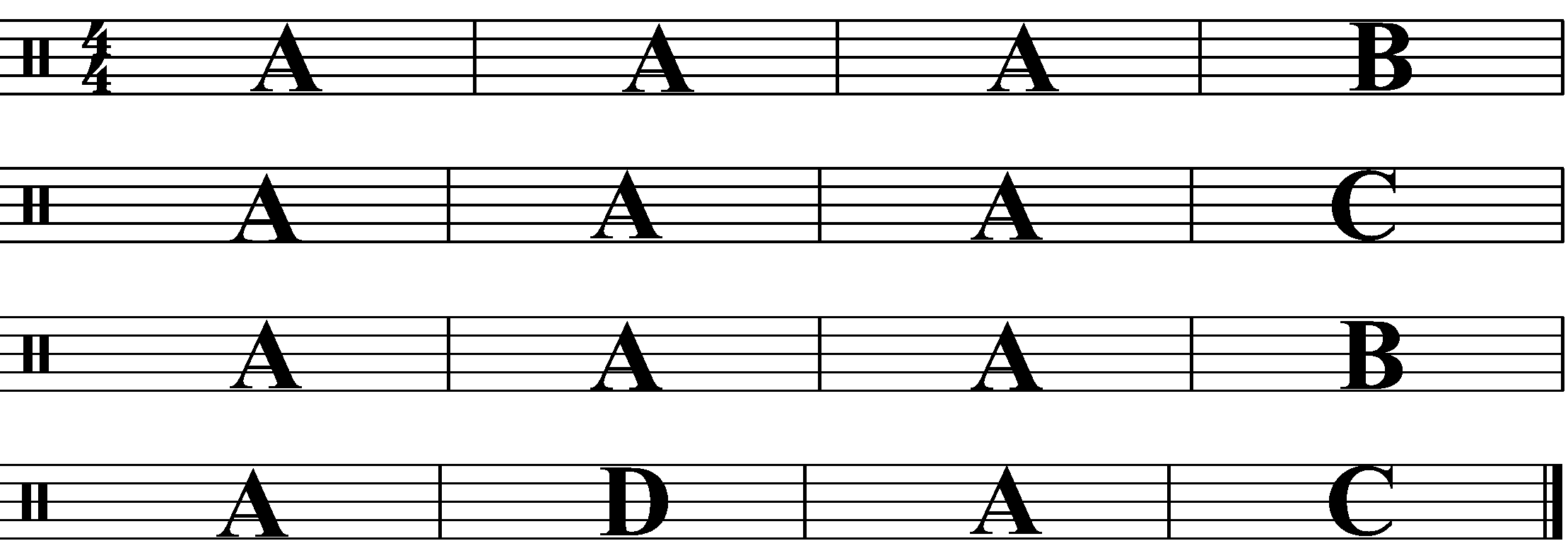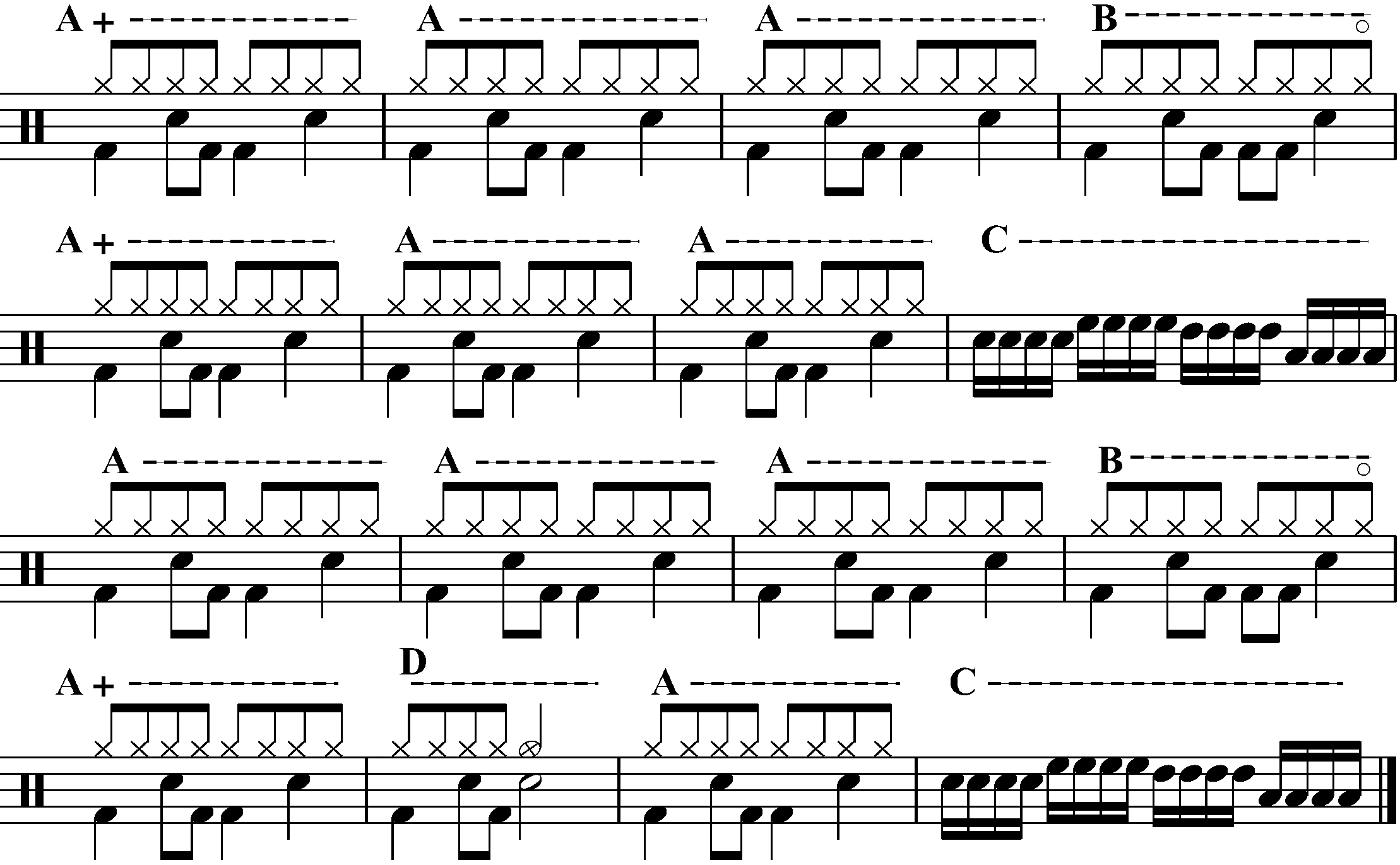In our first lesson on structure we discussed how to describe the arrangement of a whole piece of music. In this lesson we will be talking about how the smaller sections of a song, such as verses and choruses, are built. This includes things such as where fills are placed, where any pauses or stops happen and where any variations in groove happen.
In later levels more ideas are given and explored for these kind of structures. The intention of this lesson is to give you an understanding of how the individual parts of a song could be constructed.
When talking about this lower level of structure we tend to use letters to describe bars of music. If, for example, an intro is four bars long and this groove is to be played in each bar, we could say you play 'A A A A' where each 'A' references the linked groove.
If a different letter appears it means 'do something different in this bar', usually (but not always) a fill. As another example, let's say we have a bridge that is four bars long and you are presented with the structure 'A A A B'. You can see you are going to play the same thing three times followed by something different. In this case let's say 'A' is to be this groove and 'B' will be something similar to fills on this page. This gives you the following four bar phrase:

The letter reference has been put above each bar to clarify. The 'A A A B' structure shown above is incredibly common and you will be asked to use this phrase in many lessons to apply new grooves or fills.
There are many different variations for structure within a section and some further examples will be shown below. It is also worth noting that not all sections follow a structure, in these cases you would describe the part as improvised.
We could add another section in to the idea above to create a bit of a more complex pattern. This time the 'B' will be moved to bar 2 and we will add a 'C' in bar 4. This could be shown like this:

In this case 'A' is still a groove but 'B' is now a variation on the groove and 'C' is the fill. The example below uses the same parts as the structure above but with the groove variation added.

In the next structural example we will have an imaginary verse that is eight bars long and this eight bar section is actually the same four bars of music played twice. What we will do here is have a small fill in the fourth bar and a longer fill in the eighth then the rest will be groove. This gives you three different parts to account. The groove will be 'A', the small fill will be 'B' and the longer fill will be 'C'. When I say 'small fill', what I mean is just some subtle change. This could be adding an open hi hat, a couple of sixteenth not snares or anything else not too over the top you can think of. A 'longer fill' means something like a roll around the kit, eighth note rhythmic fills or something similar that fills most of the bar.
The structure for these three parts will be: 'A A A B A A A C'. This could be shown like this:

Below is the same structure with actual music applied:

The final structural idea we'll discuss here will be based on an imaginary instrumental that is 16 bars long. This uses the same ideas for 'A', 'B' and 'C' as before but this time we'll add in a 'D' section. The 'D' section is going to be a bar that has a stop in it and is only going to happen in the fourteenth bar. So that gives you the structure shown below:

Here is the same structure with actual music applied:


